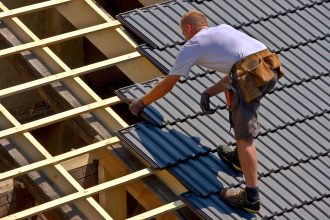When a brutal storm strikes, what follows can feel overwhelming. Finding trustworthy water damage restoration near me services helps, but that’s just the beginning. After heavy rain or a hurricane, you need a clear playbook to stop the crisis fast. This introduction sets the tone: fast water removal, sanitation, structural monitoring, and phased planning—stop, clean, dry, restore.
- Step-by-Step Blueprint for Storm Recovery Success
- Emergency Water Removal & Initial Cleanup
- Full Water Damage Assessment
- Sanitation and Mold Remediation
- Drying and Moisture Monitoring
- Structural Inspection & Repairs
- Electrical System Safety and Restoration
- Phased Restoration Process
- Financial Assistance and Insurance Coordination
- Storm Recovery Blueprint Overview
- Why This Blueprint Works
- Final Words
- FAQs
This guide gives property owners clarity and control during chaotic days. You’ll learn how to respond, reduce the risk of mold, repair structural elements, and manage finances through each stage of recovery.
Step-by-Step Blueprint for Storm Recovery Success
Storm aftermath demands a thorough recovery process to protect property and family. This blueprint guides you through every phase, from taking photos to final reconstruction. Data shows that fast intervention cuts further harm by at least 60% and mold growth risk by 70%. It’s not just about action—it’s about smart, phased recovery.
Tracking water damage early helps property owners forecast costs and schedule tasks. Studies indicate homes with documented damage get insurance settlements 30% faster. Using this playbook gives homeowners clear steps and stability amid crisis, turning chaos into a measured, effective recovery.
Here’s a detailed breakdown of what to do when water damage strikes your home.
Emergency Water Removal & Initial Cleanup
Prompt emergency water removal is crucial. Flooded homes can see mold growth within 48 hours. Removing standing water fast cuts mold risk by more than half. After drainage, sanitize with safe chemicals to prevent health issues. Use rubber boots and gloves during this vital stage to ensure safety.
Full Water Damage Assessment
Expert teams and a structural engineer should inspect walls, ceilings, foundation, insulation, and roof. Moisture trapped within building materials can undermine structural integrity. Detailed evaluation and taking photos ensure accurate damage tracking for insurance and recovery planning.
Sanitation and Mold Remediation
Even after the water is gone, water intrusion can hide in cavities. Professional remediation includes removing mold, disinfecting surfaces, and drying materials. Industry data reveals this cuts the chance of mold regrowth by 80%. Proper sanitation is essential to maintain a safe, healthy home after flood damage.
Drying and Moisture Monitoring
Use dehumidifiers and proper airflow to dry floors, ceilings, and insulation. Moisture meters allow restoration teams to monitor levels until materials reach safe dryness, often taking days. This step protects the structure and ensures stability before the rebuild begins.
Structural Inspection & Repairs
A structural engineer evaluates load-bearing walls, beams, and subfloors. They verify structural safety and recommend specific water damage repair methods. Fast, quality repair prevents future collapse or safety risks. Many homes require reinforcement in the foundation or roof after severe storms.
Electrical System Safety and Restoration
Floods often damage electrical systems. Water seeping into outlets or panels creates electrical hazards. Licensed electricians inspect wiring, appliances, and circuits. They test and replace compromised components before power is restored. This crucial step safeguards against fire or shock.
Phased Restoration Process
Recovery follows four phases:
- Stop—block water intrusion and remove standing water.
- Clean—sanitize, conduct mold remediation, and document damage.
- Dry—use equipment to dry all areas thoroughly.
- Restore—rebuild walls, ceilings, floors, and insulation.
Each stage requires skilled teams, time, and resources. Phased work ensures structural soundness and avoids wasted effort or future repairs.
Financial Assistance and Insurance Coordination
Storm recovery often relies on insurance and government financial assistance. Working with a reputable restoration company ensures accurate documentation and faster claims. Reports show insured homes recover 40% faster and receive higher settlement amounts. Professional oversight supports homeowners in rebuilding smarter, not just faster.
The Role of Professional Expertise
Licensed restoration specialists bring extensive experience, tools, and safety protocols. Their work often includes mold cleanup, moisture mapping, and structural repairs—services that weekend DIY won’t match. A skilled team also speeds insurance claims and ensures compliance with building codes.
Homeowner Involvement & Peace of Mind
Homeowners play a vital role in oversight. Strong coordination with contractors ensures transparency, timely work, and budget adherence. You’ll get clear progress updates, cost estimates, and targeted reviews of each milestone, keeping you in control during stressful days.
Storm Recovery Blueprint Overview
| Phase | Key Actions | Tools/Personnel | Timeline |
| Stop | Seal leaks, remove puddles | Pumps, rubber boots, gloves | 0–1 day post-storm |
| Clean | Snap photos, sanitize, and stand water removal | Disinfectants, cameras | Days 1–3 |
| Dry | Dry structure, remove moisture | Dehumidifiers, moisture meters | Days 2–7 |
| Inspect | Check electrical & structural safety | Engineer, electrician | Days 3–10 |
| Restore | Repair walls, ceilings, roof, and insulation | Contractors, materials | Weeks 2–8 |
| Rebuild | Final finishing, rebuild interior | Skilled labor permits | Weeks 6–16 |
Why This Blueprint Works
Following this restoration process gives structure to chaos. Fast water removal and sanitation reduce mold, health risks, and material damage. Phased work prevents rework when moisture is missed. Expert checks of electrical systems, load-bearing elements, and insulation guard against hidden dangers.
Experts note that homes using complete blueprints see post-storm repair costs drop by 30% versus hasty fixes. With insurance and financial help streamlined, homeowners gain control, protection, and speed, regaining safe, rebuilt homes.
Final Words
A well-crafted blueprint turns storm chaos into focused action. This step-by-step plan—stop, clean, dry, inspect, restore, rebuild—gives you clarity, control, and safety when needed. Use this guide to lead your recovery, protect your home, and rebuild stronger.
FAQs
How fast should water removal start after a storm?
Emergency water removal must begin within 24 hours to prevent mold growth. Standing water left for longer significantly raises health risks and structural damage.
Can I inspect the electrical systems myself?
Homeowners should not. Only licensed electricians should check outlets, wiring, panels, and appliances after water exposure. That protects against serious hazards like shocks or fires.
Why is phased restoration better?
Phased restoration ensures each stage finishes before moving to the next. That prevents moisture from getting trapped, reduces rework, and helps keep rebuild costs and time under control.













